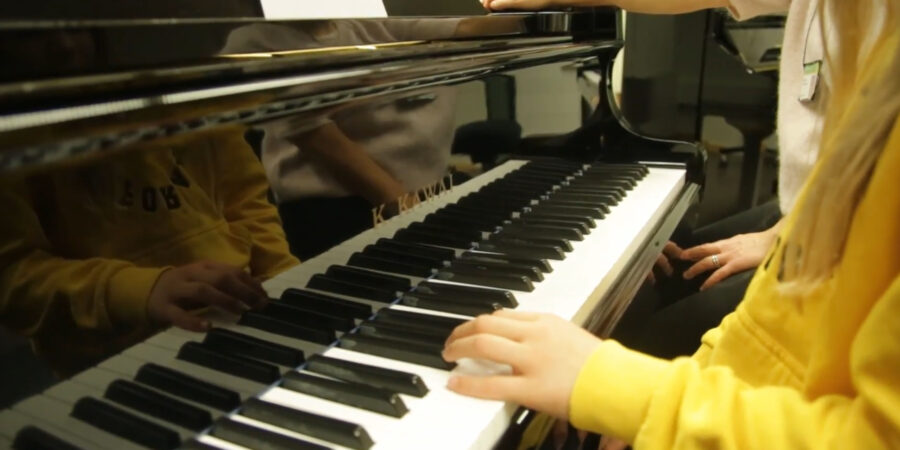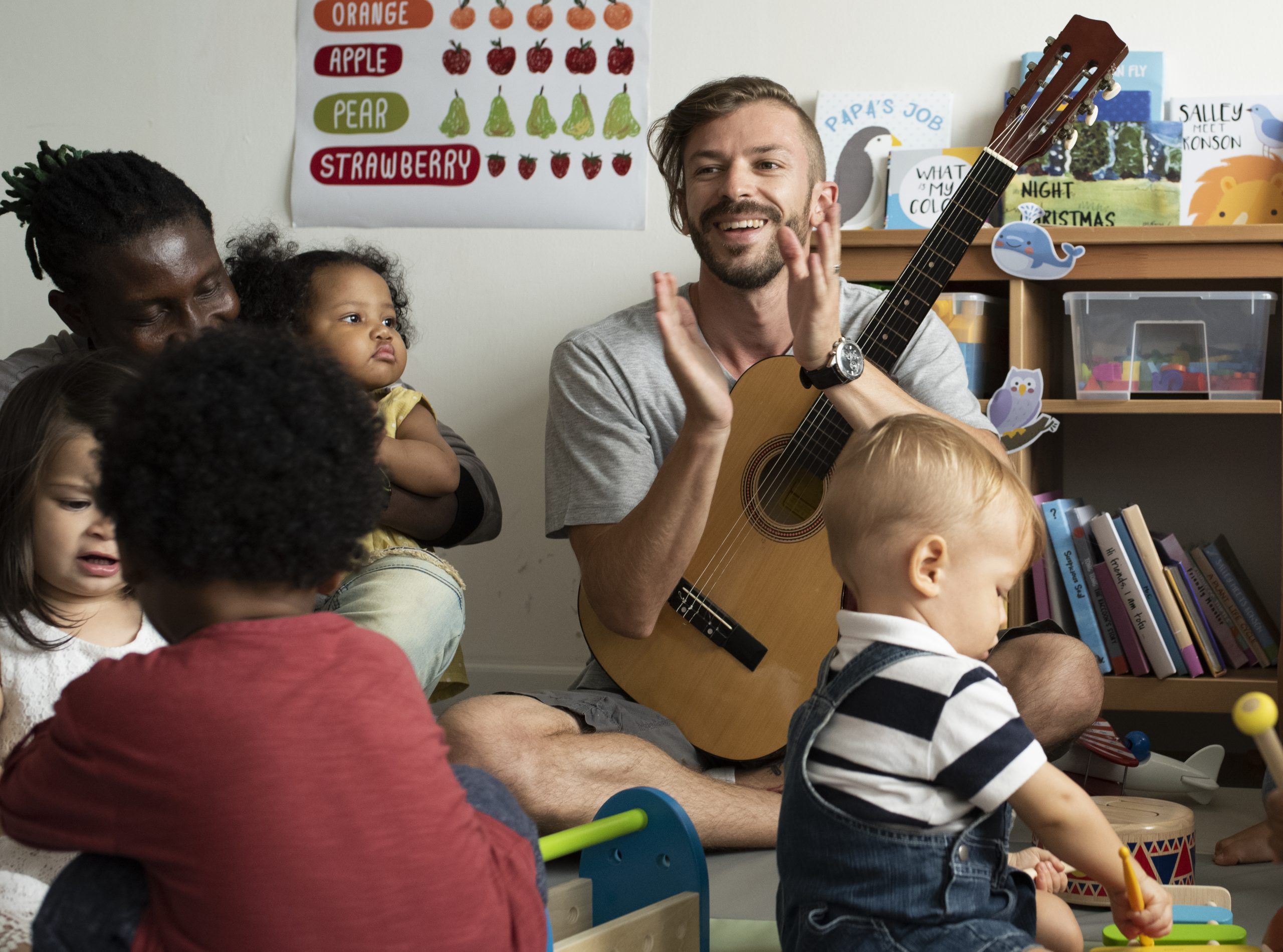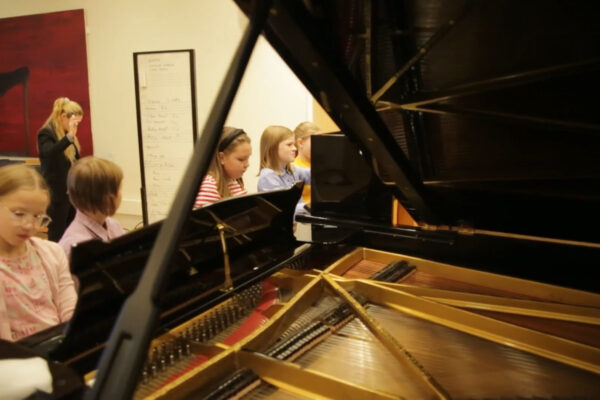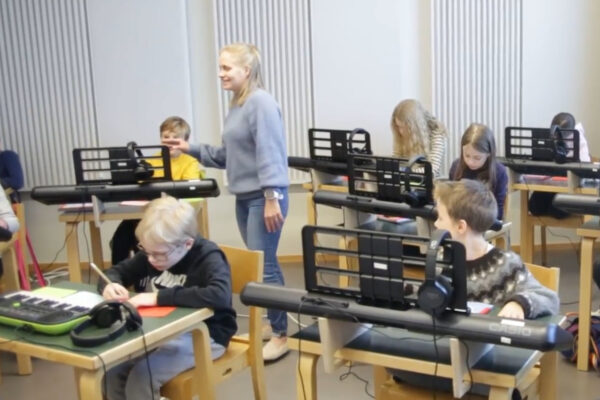
What is keyboard harmony?
Keyboard harmony is partly like playing by ear and makes music making more practical for example when accompanying someone with the piano. All you need is a melody and the chords, often the score doesn’t provide a detailed version of the music. Keyboard harmony can be used within all music genres, not only in popular/jazz music but also in classical music. The use of chord symbols is helpful in visualizing the harmonies of the piece.
What kind of benefits does keyboard harmony bring?
The use of chord symbols develops also the pupil’s understanding of the keyboard harmony in classical music, makes sight reading easier and helps general musical understanding and perception.When studying keyboard harmony the pupil learns different kinds of comp styles which he or she can use in various musical situations and it also gives a good basis for transposing and impovisation. The pupil will be able to arrange pieces according to the situation. When accompanying another instrument, singer or him/herself singing one only needs to play the harmony with a comp but when playing alone it’s also possible to arrange a piece for piano solo where the piano plays both the melody and the harmony.
What are the first steps to approach keyboard harmony?
When playing scales, we always play the primary chords of each key (I-IV-V) and use them in a familiar song so that the pupil can harmonize music right away. The pupil can play the chords using a rhythmic accompaniment pattern (comp) or just simple chorale-style chords. So that’s one way to start with keyboard harmony, the primary chords in each key. Another way to approach it is by practicing the major and minor chords with the white keys of the keyboard for example the important chord functions in root position in C major. Thus the pupil learns what is a minor and a major triad and is able to find them in root position.It’s not necessary to include inverted chords in the beginning. Sometimes it’s simpler to use only the fifth and not the whole triad. But most times it’s good to include the whole triad straight away.
Tips for an easy accompaniment
In the beginning the pupil can play the triad in the right hand and the root or the bass in the left hand. The triad can be broken (arpeggio) so that the hands never play simultaneously, the left hand starts and the right continues the harmony.
The cadenzas in the Finnish curriculum
Another way is to play the cadenza chords with the left hand using inverted chords. We always play two cadenzas with the right hand where the left hand plays the root note, and one cadenza with the left hand starting from the root position of the triad. The fingering of the cadenzas is always the same which makes it easier to transpose to every key. The aim is to memorize the fingering and so make it easier to approach a new key. When they learn the trick of the fingering and understand how it works, they get to play quite soon in a way that sounds actually very nice!
When can you start to learn keyboard harmony?
 The accompaniment skills are developed from the beginning of the studies and that is something that affects the player’s self esteem positively. It’s good that one doesn’t have to study for years to be able to accompany a small song. For example a 7-year-old pupil of mine just accompanied a Christmas song (Silent Night) and she just started her piano studies this autumn.
The accompaniment skills are developed from the beginning of the studies and that is something that affects the player’s self esteem positively. It’s good that one doesn’t have to study for years to be able to accompany a small song. For example a 7-year-old pupil of mine just accompanied a Christmas song (Silent Night) and she just started her piano studies this autumn.
Tips for school music teachers
I’m not qualified as a school music teacher so I don’t know all the nuances of group pedagogy. In bigger groups most of the pupils don’t have any kind of musical education background. Piano is a very visual instrument and all the keys are visible to the pupils and that is something to lean on in learning to play the basic triads by heart. Learning for example only the major and minor chords with a white key root note is quite easy to learn from the keyboard just like they would learn how to recognize guitar tabs. Of course they need to first be able to recognize the piano keys and then form the triads that are like nice “finger packages”.
Teacher: Maiju Roine, Lapland Music Institute

Maiju Roine is a pianist and piano teacher. She has a Master’s degree in music, and she has studied in Tampere and Oulu. She graduated with excellent degrees in piano playing, and in her bachelor’s thesis she studied the practise of teaching keyboard harmony. In her master’s thesis she examined the possibilities of composing-crafting as a learning method in studying music. Maiju also composes pedagogical piano pieces for children, and two of her published collections of miniatures have become popular among Finnish piano pedagogues and students.
Download Cadenza PDF here:
Download exercise in the video at 1’50 here:





